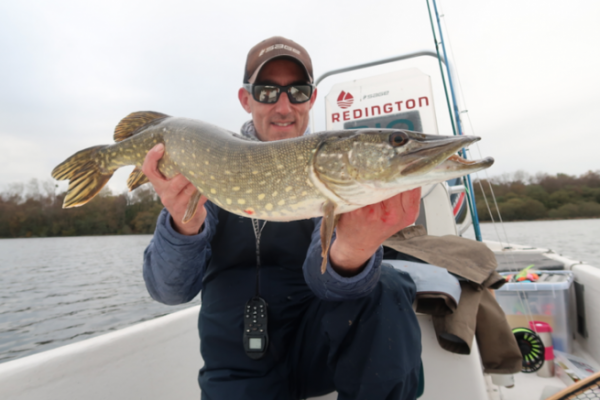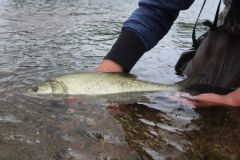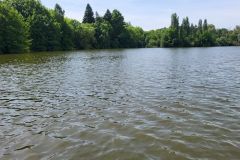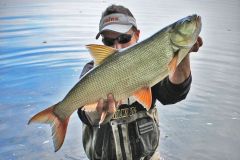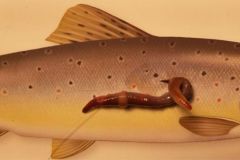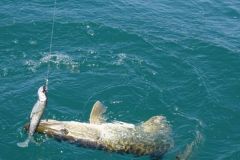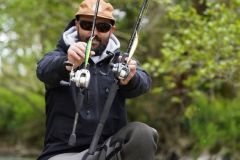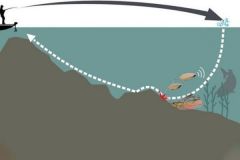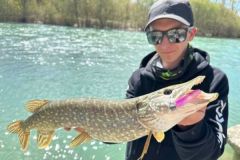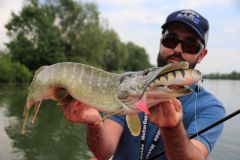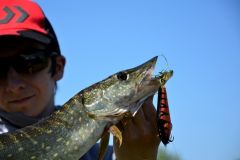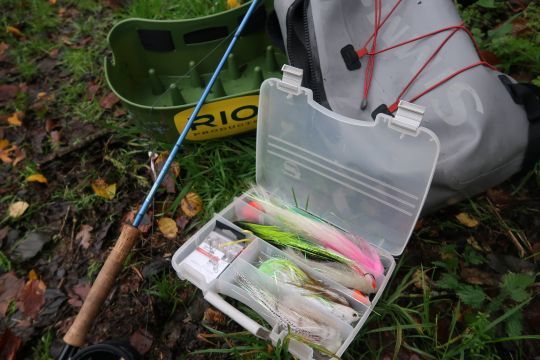
Choosing the right equipment
The pike is the most sought-after freshwater predator in France. It feeds on large prey (fish, rodents, amphibians, etc.), requiring fly-fishermen to propel large flies. Appropriate equipment is therefore essential.
It is therefore important to acquire a powerful rod with a medium-fast action that will allow you to cast without tiring too much. A good casting technique is essential for fly fishing for pike, in particular the double pull.
Power 9 and 10 rods are the most commonly used, although it is sometimes said that an 8 line rod may be suitable. I don't agree, except when using small flies (around 10 cm), which is rarely the case, except in certain situations.
Most of the flies we use measure between 15 and 30 cm if we really want to go after pike and not just catch the small pikelets found in the edges.
Fast rods are to be avoided, and I advise you to choose a softer action instead. They load deeply without jerking the rod and allow you to cast for hours on end. All brands offer specific rods for pike. I use SAGE Payload and Redington Predator rods.
The reel is not very important in the sense that pike rarely make big rushes and fights. It simply has to balance your rod and be able to hold your line plus 50 to 100 m of backing mainly for lining your reel.
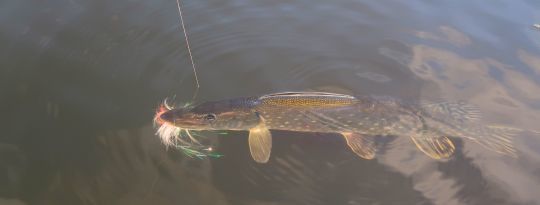
Which silks to use?
It is essential to have several lines of different densities to be able to fish in all water layers. Floating and intermediate WF (front weight) lines are most commonly used for fishing between the surface and 2 m depth, but sometimes a sinking line can be very useful. In rivers, it will enable you to fish in currents or sometimes in deep pools. On lakes, in certain situations and conditions, you need to fish hollow to find pike in several meters of water.
All bristle brands (Rio, Airflo, Scientific Angler, etc.) offer special pike bristles in several densities. I use RIO Pike/Musky bristles.
A reel with several spools can enable you to adapt to every situation and condition.
It's a good idea to have 2 or 3 rods already set up, especially for boats (or even float tubes), so you can quickly change silk density and find the right depth for Master Esox!
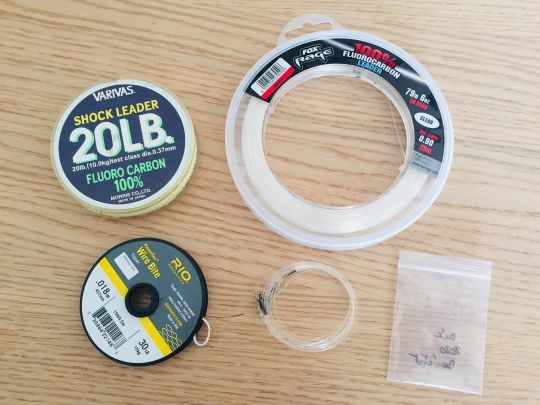
Flies, leaders and other essential equipment
In another article, we'll look in more detail at the different pike flies you need to cope with different situations.
It's important to have flies of different sizes and colors. Natural flies imitating roach, perch, forage fish, for clear waters and "educated" fish. And colored or "flashy" flies for tinted waters or to play on the aggressiveness of fish.
As for the leader, some prefer steel, others titanium or even fluorocarbon. It's a question of choice and taste.
Personally, I mainly use an 80-90° fluorocarbon strand about 50 cm long mounted on a 40° brittle strand also in fluoro. The brittle line is about 1.5 to 2.5 m long for floating lines and I reduce its length for intermediate lines and even shorter (1 m) for diving lines.
The steel leader is more flexible, but I find it very visible, especially in sunny conditions. It's up to you to decide which you prefer.
Important accessories include wire cutters and long-nosed pliers for unhooking flies sometimes lodged deep in the 400 to 700-tooth mouths of pike. Some anglers use fingertips for stripping.
A wide-mouth landing net. And a measuring tape for those who like numbers.
